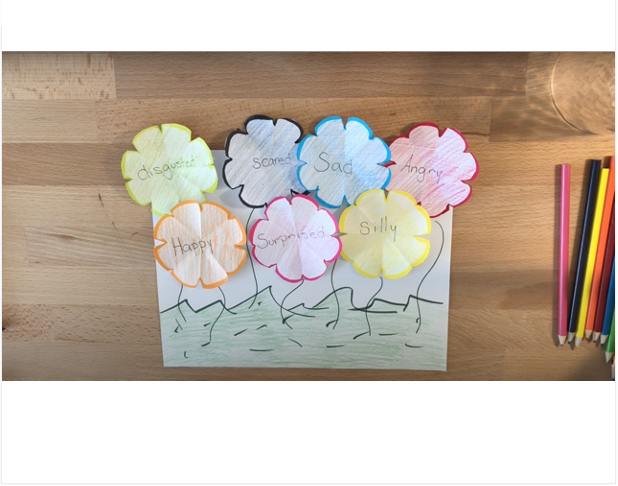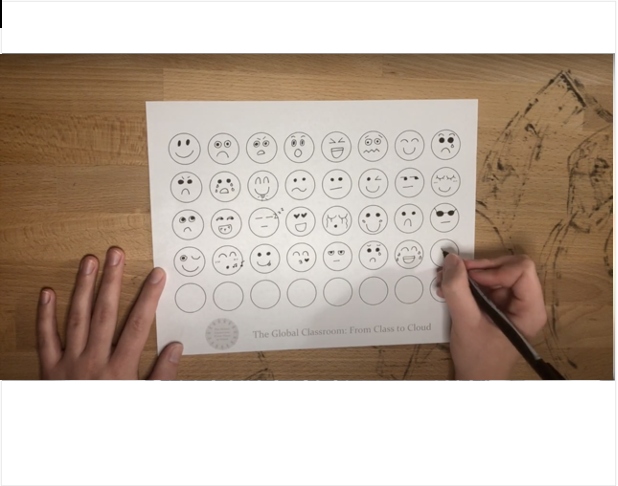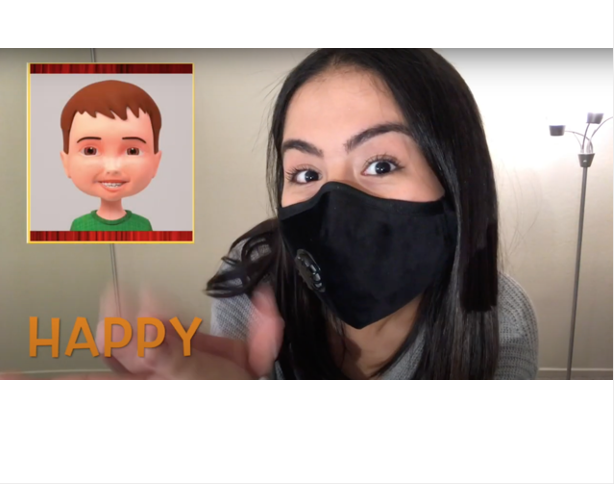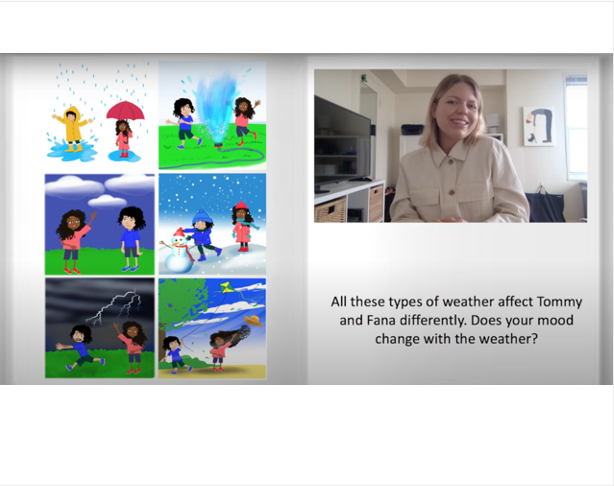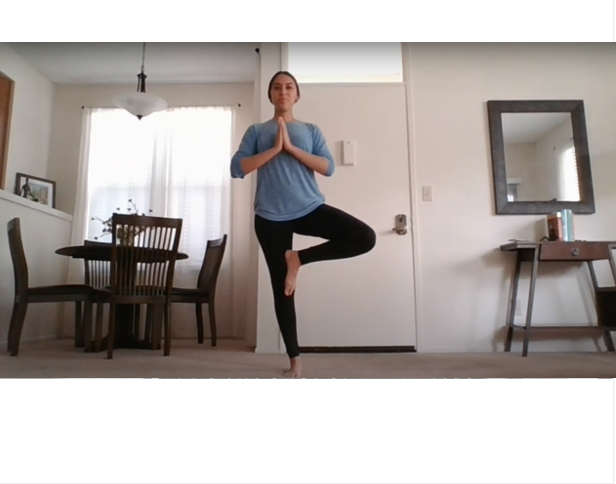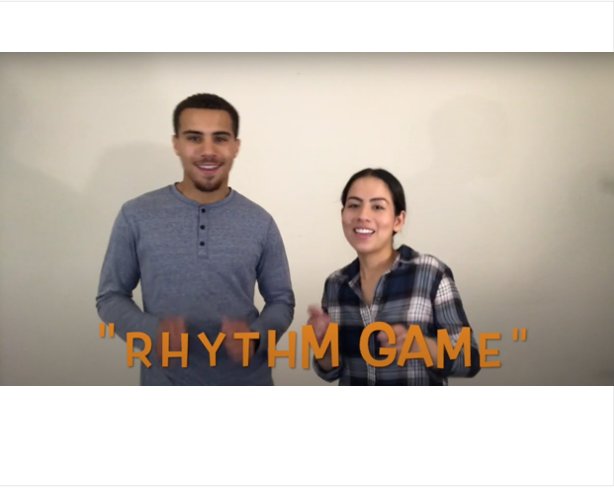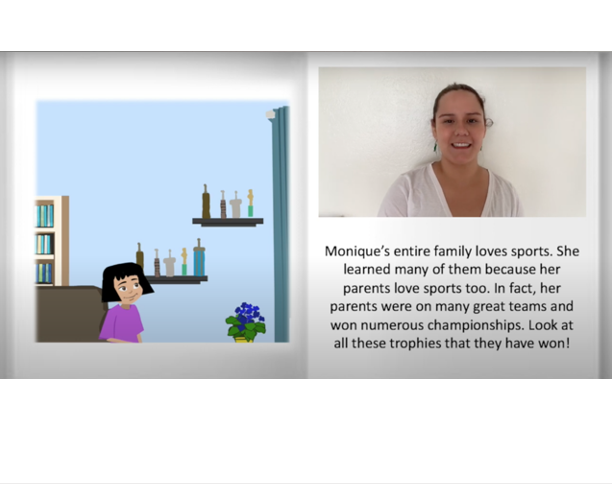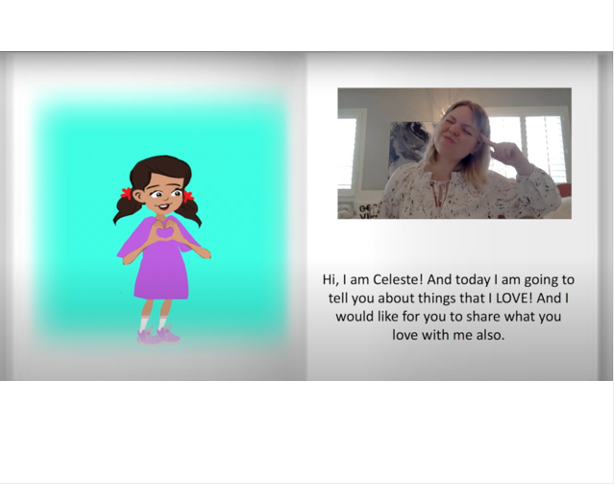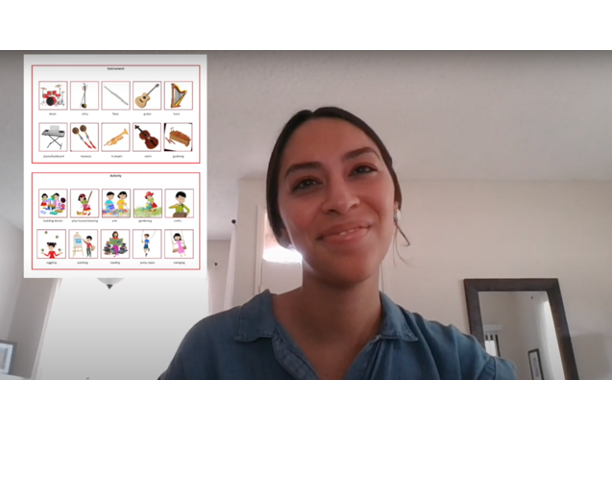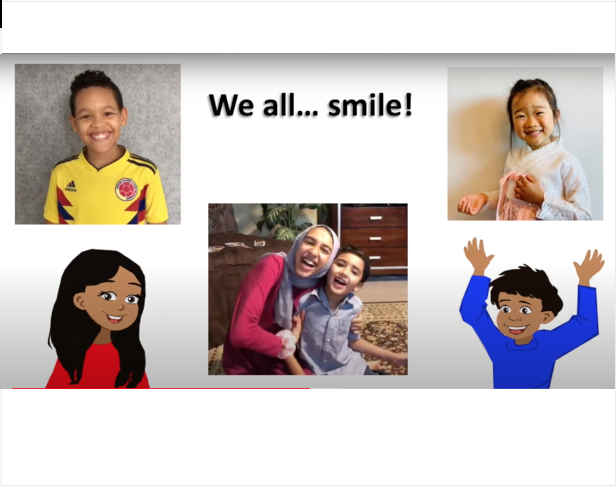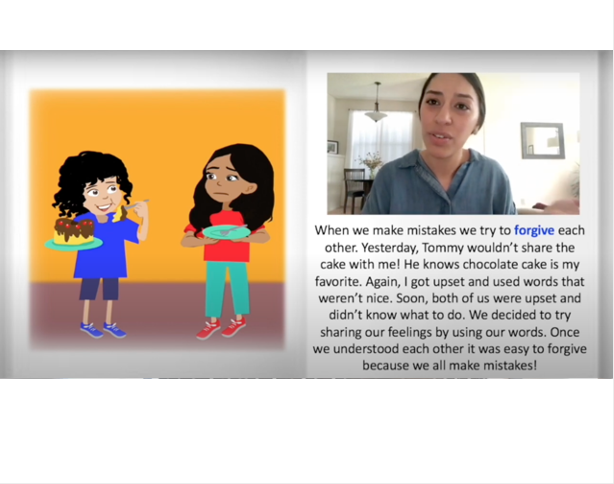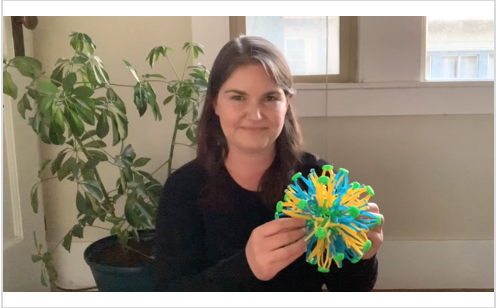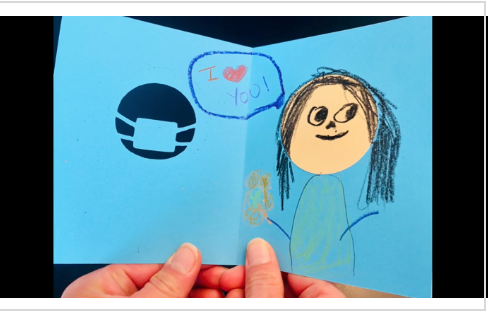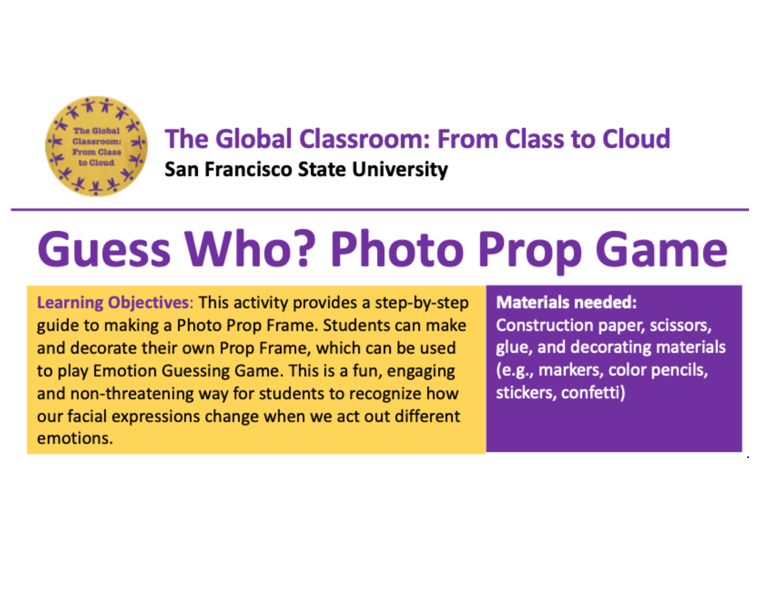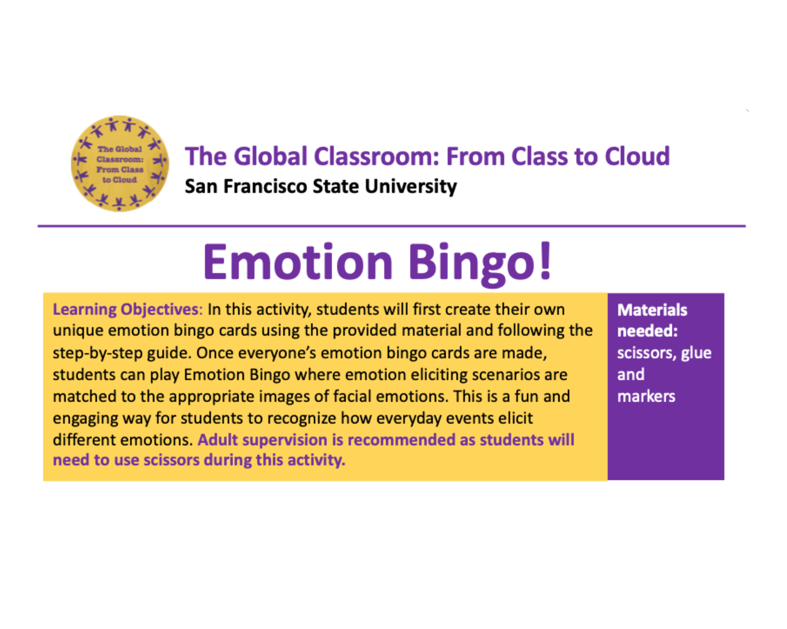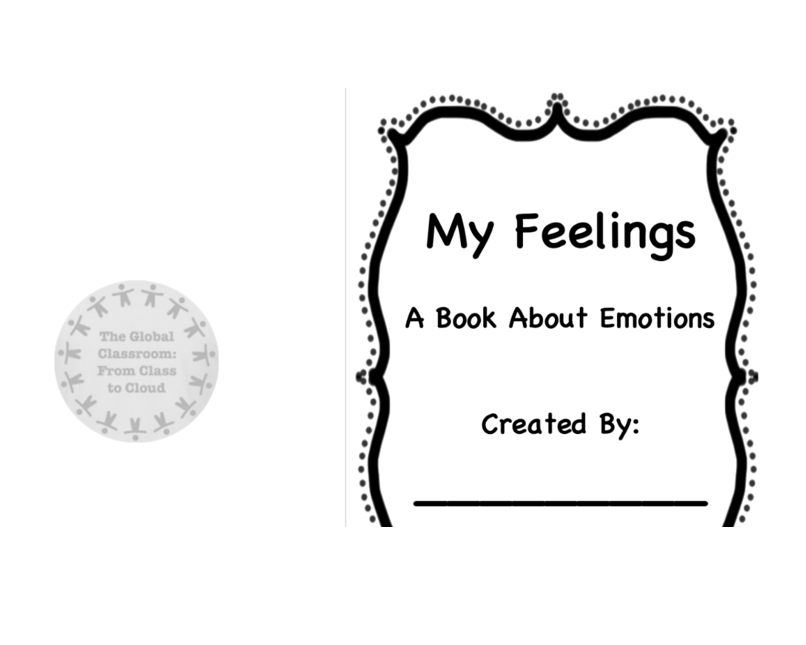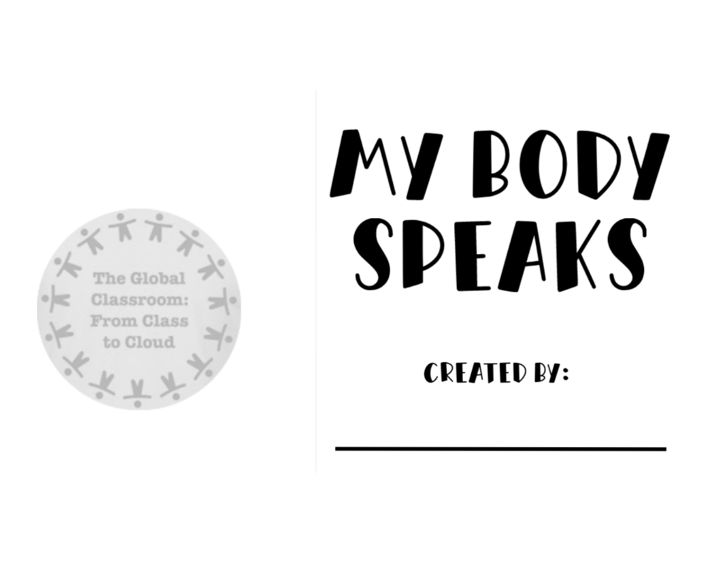SOCIAL-EMOTIONAL LEARNING AT HOME
VIDEOS AND ACTIVITIES
Category
Video
Emotion Knowledge - Facial Expressions
Description
Guided Reading: This emotion book provides contexts where students (1) learn six universal emotions (happy, sad, surprise, angry, fear, and disgust) (2) recognize distinct facial features for each emotion and (3) understand that varying situations and events elicit different emotions.
Interactive Options
Independent Learning: This video can be viewed by students on their own without direction from an adult.
Guided Learning: Teachers and/or caregivers watch the video with students and encourage them to imitate each emotion.
Collaborative Learning: After and/or during viewing, teachers and/or caregivers facilitate discussions related to events or situations that elicit these emotions for participating students (e.g., pause the video and discuss the question posed by the instructor).
Category
Video
Emotion Knowledge - Facial Expressions
Description
Instructional Lesson: Students will learn about the micro facial expressions associated with each basic emotion (happy, sad, surprise, angry, fear, and disgust) using both kid- friendly 3D avatars displaying FACS (Facial Action Coding System) as well as photos of real people. Masks are incorporated for two purposes (1) for students to become accustomed to seeing people with masks on and (2) to help focus on isolated areas within the face (e.g., muscle movements around eyes, top of the nose, and forehead) so as to help students recognize emotions more accurately while masks are present.
Interactive Options
Independent Learning: This lesson can be viewed by students on their own without direction from an adult.
Guided Learning: We highly recommend that teachers and/or caretakers view the video with students to encourage them to follow instructions.
Collaborative Learning: Teachers and/or caregivers may want to pause the video and further explain micro facial expressions for each emotion. After and/or during viewing the video, have students name some of the micro facial features associated with each emotion. Have students view their facial expressions displayed on their computer/tabloid screen or use a small mirror. Have students play the guessing game, taking turns making facial expressions of six basic emotions (both with and without masks on). Emphasize that it can be challenging to recognize people’s emotions with masks and therefore, it is important to use words to express our feelings.
Category
Video
Emotion Knowledge - Facial Expressions
Description
Art Activity: This step-by-step guide to making feeling flowers helps students in expressing and discussing events and scenarios that may elicit different emotions. Students learn to recognize the association between emotion and related dimensions such as color and pattern.
Interactive Options
Collaborative Learning: Adult supervision is recommended as students will need to use scissors during this activity. An adult should follow the instructor’s lead and help students express colors and events associated with their own emotions. Try sharing yours as well, which will help students feel more comfortable and understand it is important for them to share their feelings and emotions.
Category
Video
Emotion Knowledge - Facial Expressions
Description
Art Activity: This video teaches how to draw simple emotion faces that students can easily follow. Happy, sad, angry, embarrassed, confused and more… Students will be taught to draw 32 different emojis, providing them the outlet to express emotions through drawings.
Interactive Options
Independent Learning: This video can be viewed and the drawing activity can be done by students on their own without direction from an adult.
Guided Learning: Teachers and/or caregivers watch with students; encourage students to draw each emotion. This video doesn’t have narratives during the drawing session. Therefore, teachers may even mute the video and allow students to talk freely during the drawing session and/or provide additional instruction.
Collaborative Learning: After and/or during viewing the video, have the students share their favorite ones with the class. Students can even draw the background that may go with the emoji. Also, have students create some of their own as suggested in the video!
Category
Video
Emotion Knowledge - Body Language
Description
Micro Expressions Review: Students continue to build their ability to read subtle micro facial expressions associated with six basic emotions using 3D avatar characters displaying emotion features aligned with FACS (Facial Action Coding System). By comparing two distinct emotions (e.g., happy and angry) presented side by side, students realize that certain emotions may be more challenging to perceive when people are wearing masks. This review focuses on visible facial features when wearing masks.
Interactive Options
Independent Learning: This lesson can be viewed by students on their own without direction from an adult.
Guided Learning: Teachers and/or caregivers watch with students; encourage students to follow instructions and make the facial expressions while viewing the video
Collaborative Learning: Teachers and/or caregivers may want to pause the video and further explain the distinction between two emotion expressions. After and/or during viewing the video, have students name some of the micro facial features associated with each emotion.
Category
Video
Emotion Knowledge - Body Language
Description
Instructional Lesson: Introduction to how body language (e.g., gestures, posture, movements) provide directive cues for one’s emotional state. Inclusion of masks in the video helps students focus on reading body language rather than facial expression.
Interactive Options
Independent Learning: This video can be viewed by students on their own without direction from an adult.
Guided Learning: Teachers and/or caregiver should watch the video with students and encourage them to wear their mask imitate each body movement
Collaborative Learning: After and/or during viewing, teachers and/or caregivers should facilitate discussions related to events or situations that elicit these emotions for participating students.
Category
Video
Emotion Knowledge - Body Language
Description
Music and Movement: Through the use of music and dance, students are given the chance to identify and practice the different movements, gestures, and postures that are associated with the six basic emotions (e.g. happy, sad, angry, scared, surprise, & silly). Students will learn to creatively express their emotions through body language.
Interactive Options
Independent Learning: This video can be viewed by students on their own without direction from an adult.
Guided Learning: Teachers and/or caregiver should watch the video with students and encourage them to wear a mask and imitate each emotion based dance move.
Collaborative Learning: After and/or during viewing, teachers and/or caregivers should facilitate discussions related to how the movements and music collaborate to represent each emotion.
Category
Video
Emotion Knowledge - Body Language
Description
Guided Reading: This book introduces the idea of how weather may affect our emotional states. Furthermore, students will recognize that weather may affect individuals differently, helping them build Theory of Mind understanding (i.e., perspective-taking).
Interactive Options
Independent Learning: This video can be viewed by students on their own without direction from an adult.
Guided Learning: Teachers and/or caregiver should watch the video with students and encourage them to imitate each emotion through the use of facial expressions and body language.
Collaborative Learning: After and/or during viewing, teachers and/or caregivers should facilitate discussions related to events or situations that elicit these emotions for participating students as well as the characters in the book and the body language seen with each reviewed emotion.
Category
Video
Emotion Management - Practicing Mindfulness
Description
Guided Reading: This book provides students with a look into social contexts where people may experience strong emotions. Through the lens of the character, students learn to recognize overwhelming emotions, effective ways to manage those emotions and new outlooks on how to conduct themselves pro-socially.
Interactive Options
Independent Learning: This video can be viewed by students on their own without direction from an adult.
Guided Learning: Teachers and/or caregivers can watch the video with students and encourage them to imitate each emotion.
Collaborative Learning: After and/or during viewing, teachers and/or caregivers can facilitate discussions related to events or situations that elicit these emotions for participating students. For example, pausing the video at times to ask students what they think might happen or to give space for students to think about what they would do if they were in the situations illustrated.
Category
Video
Emotion Management - Practicing Mindfulness
Description
Music and Movement: This activity can be used as a tool for emotion management. Guided yoga poses, visualizations and breathing techniques will help give students a calming foundation to return to when they are feeling upset, nervous, worried, and/or overstimulated. Throughout the activity the student will learn to better recognize changes in their emotional state and adjust accordingly.
Interactive Options
Independent Learning: This video can be viewed by students on their own without direction from an adult.
Guided Learning: Teachers and/or caregivers can watch the video with students and encourage them to imitate each motion.
Collaborative Learning: After and/or during viewing, teachers and/or caregivers facilitate discussions related to events or situations that elicit these emotions for participating students. For example, asking students to reflect on how they felt both before and after the activity and why.
Category
Video
Emotion Management - Practicing Mindfulness
Description
Music and Movement: In this rhythm game, students follow the instructor’s cues of action to the beat. Students build important skills related to listening, following directions, and thinking before taking action. Students become more aware of their own behaviors and reactions while gaining self-control and executive functions.
Interactive Options
Independent Learning: This video can be viewed by students on their own without direction from an adult.
Guided Learning: Teachers and/or caregivers can watch the video with students and encourage them to imitate each motion.
Collaborative Learning: After and/or during viewing, teachers and/or caregivers can facilitate discussions related to events or situations that elicit these emotions for participating students. For example, having students create their own movements to replicate or add on to the game.
Note: Some students may need more practice and/or additional assistance before they are ready to go onto the next level.
Category
Video
Emotion Management - Practicing Mindfulness
Description
Guided Reading: This book helps to foster understanding that when working together great results can be achieved. Students will be introduced to the importance of sportsmanship and teamwork through the actions of Monique and her team members.
Interactive Options
Independent Learning: This video can be viewed by students on their own without direction from an adult.
Guided Learning: Teachers and/or caregivers watch with students; encourage students to follow instructions and answer the presented questions while viewing the video.
Collaborative Learning: We encourage teachers and/or caregivers to pause the video in between each page to help students share their answers to the given questions. A discussion at the end of the video regarding why teamwork is important and when they have been a “team-player” will help to reinforce the concepts presented within the book.
Category
Video
Pro-Social Behavior - Embracing Diversity
Description
Guided Reading: This story facilitates students’ understanding of likes and dislikes among their peers. It is further emphasized that through awareness of our similarities and differences students will learn to recognize, understand, and celebrate the qualities that make us all unique and special.
Interactive Options
Independent Learning: This video can be viewed by students on their own without direction from an adult.
Guided Learning: Teachers and/or caregivers can watch the video with students and encourage them to respond to the video when being asked a question by the instructor.
Collaborative Learning: After and/or during viewing, teachers and/or caregivers can facilitate discussions related to events or situations that elicit these emotions for participating students. For example, sharing and/or asking students to share about a time when a friend, family member or someone they know liked something that they didn’t like so much. Encourage students to think/share that even though they may have differences with their friends, they can still be great friends (i.e. My friend likes to dance and I like to read. Even though my friend and I don’t like the same things, I still love my friend).
Category
Video
Pro-Social Behavior - Embracing Diversity
Description
Instructional Lesson: Presented as a fun sharing activity, students will be prompted to indicate their likes and dislikes from a variety of options. This will support them in feeling more comfortable communicating their preferences. Additionally, students will become aware that others may have differing interests. Sharing information about who they are will help students learn to appreciate and embrace individuality. This will set the basis for perspective taking which will support students in building healthy connections with their peers.
Interactive Options
Independent Learning: This video can be viewed by students on their own without direction from an adult.
Guided Learning: Teachers and/or caregivers can watch the video with students and encourage them to share their likes and dislikes throughout each category.
Collaborative Learning: After and/or during viewing, teachers and/or caregivers can facilitate discussions related to events or situations that elicit these emotions for participating students. For example, allow students to rotate and each share something they like or dislike in each category. This will allow them to respect each other's preferences.
Category
Video
Pro-Social Behavior - Embracing Diversity
Description
Meet Our Friends: Students will learn to recognize the “self” as a part of a greater group by reviewing the experiences of others with differing backgrounds and cultures. Furthermore, the importance of appreciating differences and diversity will be portrayed and taught.
Interactive Options
Independent Learning: This video can be viewed by students on their own without direction from an adult.
Guided Learning: Teachers and/or caregivers can watch the video with students and provide extra explanation after each page presented as well as allow students to answer the provided questions.
Collaborative Learning: After and/or during viewing, teachers and/or caregivers can facilitate discussions related to similarities and differences presents, as well as the importance of diversity and appreciating other cultures.
Category
Video
Pro-Social Behavior - Embracing Diversity
Description
Guided Reading: This book portrays the importance of friendship and the different prosocial behaviors associated with caring for and respecting friends It also confronts the possible actions that can hurt the present relationship and those on the other side of the interaction.
Interactive Options
Independent Learning: This video can be viewed by students on their own without direction from an adult.
Guided Learning: Teachers and/or caregivers watch with students; encourage students to follow instructions and answer the presented questions while viewing the video.
Collaborative Learning: We encourage teachers and/or caregivers to pause the video in between each page to help students share their answers to the given questions. A discussion at the end of the video regarding what behaviors may hurt friendships and what behaviors may support the growth of friendships should be facilitated. Asking for specific examples from students will promote best understanding.
Category:
Video
Mindfulness Meditation
Description:
This activity provides students with breathing exercises to calm the mind. Through the use of calming visuals, students will be able to imagine their overwhelming thoughts and feelings in physical form. Such techniques allow students to better understand and approach strong emotions in the future.
Interactive Options:
Independent Learning: This video can be viewed by students on their own without direction from an adult.
Guided Learning: Teachers and/or caregivers can watch the video with students and encourage them to participate in meditation steps.
Collaborative Learning: After and/or during viewing, teachers and/or caregivers can facilitate discussions related to events or situations that elicit these strong emotions and other ways one may calm these emotions. For example, as the end of the video ask students what situations cause them to feel overwhelmed and what they like to do to calm those emotions.
Category:
Video
Mindfulness Meditation
Description:
This activity provides students with breathing exercises to calm the mind. Through the use of tools such as a Hoberman Ball or feather, students are able to visualize the internal motions of their breath and practice controlled breathing. Mindfulness meditation provides a healthy outlet to confront overwhelming emotions.
Interactive Options:
Independent Learning: This video can be viewed by students on their own without direction from an adult.
Guided Learning: Teachers and/or caregivers can watch the video with students and encourage them to imitate each emotion.
Collaborative Learning: After and/or during viewing, teachers and/or caregivers can facilitate discussions related to events or situations that elicit these strong emotions and other ways one may calm these emotions. For example, as the end of the video ask students what situations cause them to feel overwhelmed and what they like to do to calm those emotions.
Category:
Video
Mindfulness Meditation
Description:
This activity provides students with breathing exercises to calm the mind. Through the use of tools such as a pinwheel, students are able to visualize the impact of their breath and practice controlled breathing. Mindfulness meditation provides a healthy outlet to confront overwhelming emotions.
Interactive Options:
Independent Learning: This video can be viewed by students on their own without direction from an adult.
Guided Learning: Teachers and/or caregivers can watch the video with students and encourage them to imitate each emotion.
Collaborative Learning: After and/or during viewing, teachers and/or caregivers can facilitate discussions related to events or situations that elicit these strong emotions and other ways one may calm these emotions. For example, as the end of the video ask students what situations cause them to feel overwhelmed and what they like to do to calm those emotions.
Category:
Video
Mindfulness Meditation
Description:
This activity provides students with breathing exercises to help calm any upsetting feelings experienced due to social distancing and long term separation from loved ones. By discussing separation from loved ones through the pandemic, students are able to find connectedness and comfort through the knowledge that we are all missing someone at this time. Mindfulness meditation provides a healthy outlet to confront and calm overwhelming emotions.
Interactive Options:
Independent Learning: This video can be viewed by students on their own without direction from an adult.
Guided Learning: Teachers and/or caregivers can watch the video with students and encourage them to participate.
Collaborative Learning: After and/or during viewing, teachers and/or caregivers can facilitate discussions related to who students are missing at this time as well as how the pandemic has made them feel.
Category:
Video
Mindfulness Meditation
Description:
This activity provides students with breathing exercises to calm the mind. Through the use of creative imagination and the manipulation of their own energy, students are able to practice focused thinking while visualizing the internal motions of their breath. Mindfulness meditation provides a healthy outlet to confront overwhelming emotions.
Interactive Options:
Independent Learning: This video can be viewed by students on their own without direction from an adult.
Guided Learning: Teachers and/or caregivers can watch the video with students and encourage them to participate.
Collaborative Learning: After and/or during viewing, teachers and/or caregivers can facilitate discussions related to when they may use this Energy Ball technique to calm overwhelming emotions.
Category
Activity
Emotion Knowledge - Face and Body
Description
Interactive Game: This activity provides a step-by-step guide to making a Photo Prop Frame. Students can make and decorate their own Prop Frame, which can be used to play Emotion Guessing Game. This is a fun, engaging and non-threatening way for students to recognize how our facial expressions change when we act out different emotions.
Interactive Options
Collaborative Learning: This activity provides a step-by-step guide to making a Photo Prop Frame. Students can make and decorate their own Prop Frame, which can be used to play Emotion Guessing Game. This is a fun, engaging and non-threatening way for students to recognize how our facial expressions change when we act out different emotions. Adult supervision is recommended as students will need to use scissors during this activity. Once the Prop Frame is made, have students take turns making facial expressions depicting certain emotions holding up the frame that they have made. Have the rest of the class guess the emotions. Teachers and/or caregivers may want to demonstrate first. Have students take photos of themselves expressing a variety of emotions and then have them discuss the features of the corresponding facial expressions (e.g., similarities among all happy faces; differences between happy and sad faces).
Category
Activity
Emotion Knowledge - Face and Body
Description
Interactive Game: In this activity, students will first create their own unique emotion bingo cards using the provided material and following the step-by-step guide. Once everyone’s emotion bingo cards are made, students can play Emotion Bingo where emotion eliciting scenarios are matched to the appropriate images of facial emotions. This is a fun and engaging way for students to recognize how everyday events elicit different emotions.
Interactive Options
Collaborative Learning: Adult supervision is recommended as students will need to use scissors during this activity. Teachers and/or caregivers will need to read out the emotion eliciting scenarios while students play the Emotion Bingo using their own unique Emotion Bingo cards. We encourage teachers and/or caregivers to go over students’ responses and help students recognize that during certain events people may experience different and/or multiple emotions at the same time.
Category
Activity
Emotion Knowledge - Face and Body
Description
Workbook: This activity is designed to help students identify what basic, universal emotions (e.g., happy, sad, surprised, digested, angry, scared) as well as feeling silly and feeling loved means to them. The activity will allow students to express and sharing their feelings using words and art in a fun, supported way.
Interactive Options
Independent Learning: If students are comfortable readers, this activity can be done on their own without direction from an adult.
Guided Learning: Teachers may need to read to students what is written on each page and provide additional explanation.
Collaborative Learning: Have students share and explain their book about emotions with the class. Help students relate to each other’s experience by asking the rest of the group if they have ever felt the same way.
Category
Activity
Emotion Knowledge - Face and Body
Description
Workbook: This activity is designed to help students identify what basic, universal emotions (e.g., happy, sad, surprised, digested, angry, scared) through one’s body language. The activity will allow students to express their feelings using words and art in a fun, supported way. Students are expected to identify which emotions correlate with the provided drawings of body language, and are encouraged to draw in the facial expressions that correspond. There are no right or wrong interpretations of the drawings, but encourage the students to explain the reasoning behind their choices.
Interactive Options
Independent Learning: If students are comfortable readers, this activity can be done on their own without direction from an adult.
Guided Learning: Teachers may need to read to students what is written on each page and provide additional explanation.
Collaborative Learning: Have students share and explain their book with those around them. Help students relate to each other’s different interpretations of each emotion by facilitating conversation about why they chose an emotion for each drawing presented.
For further information, please visit the "Palo Alto Unified School District" section on the "Outreach Programs" page.





